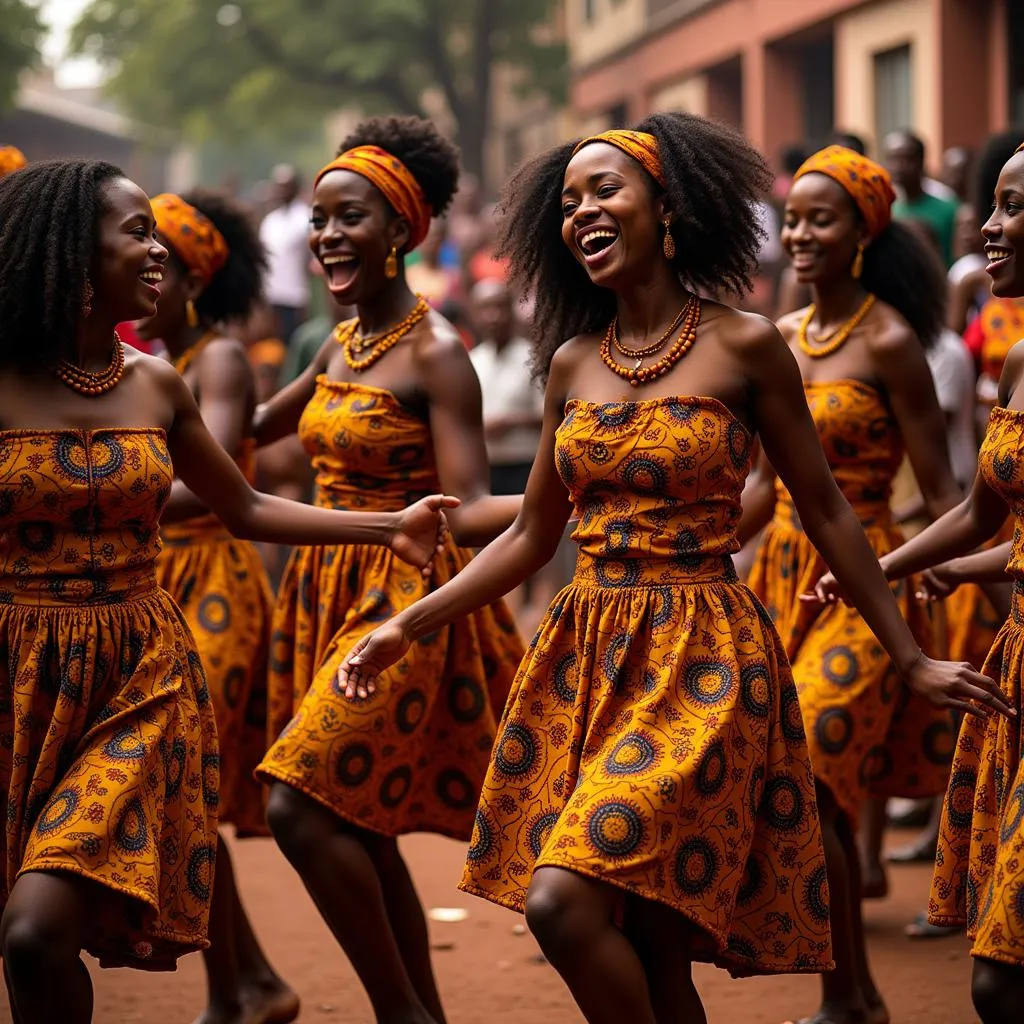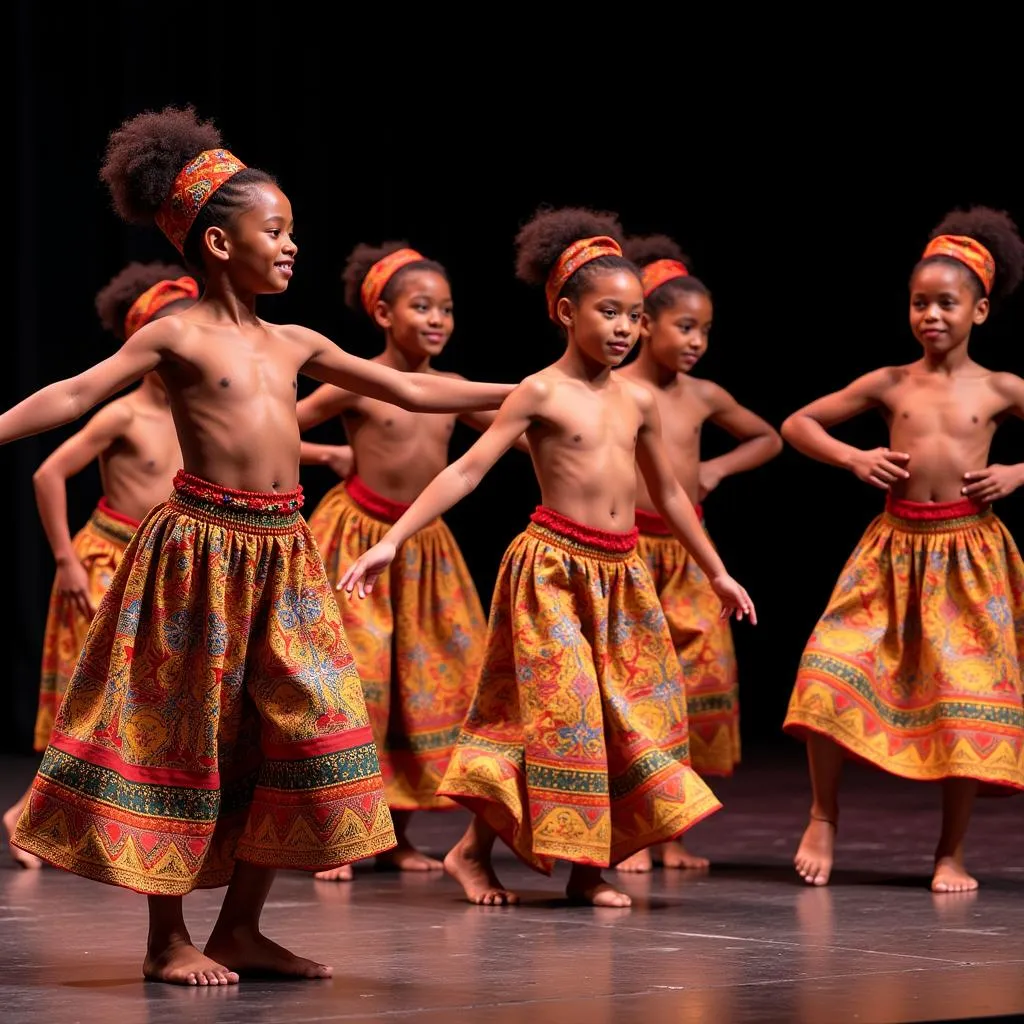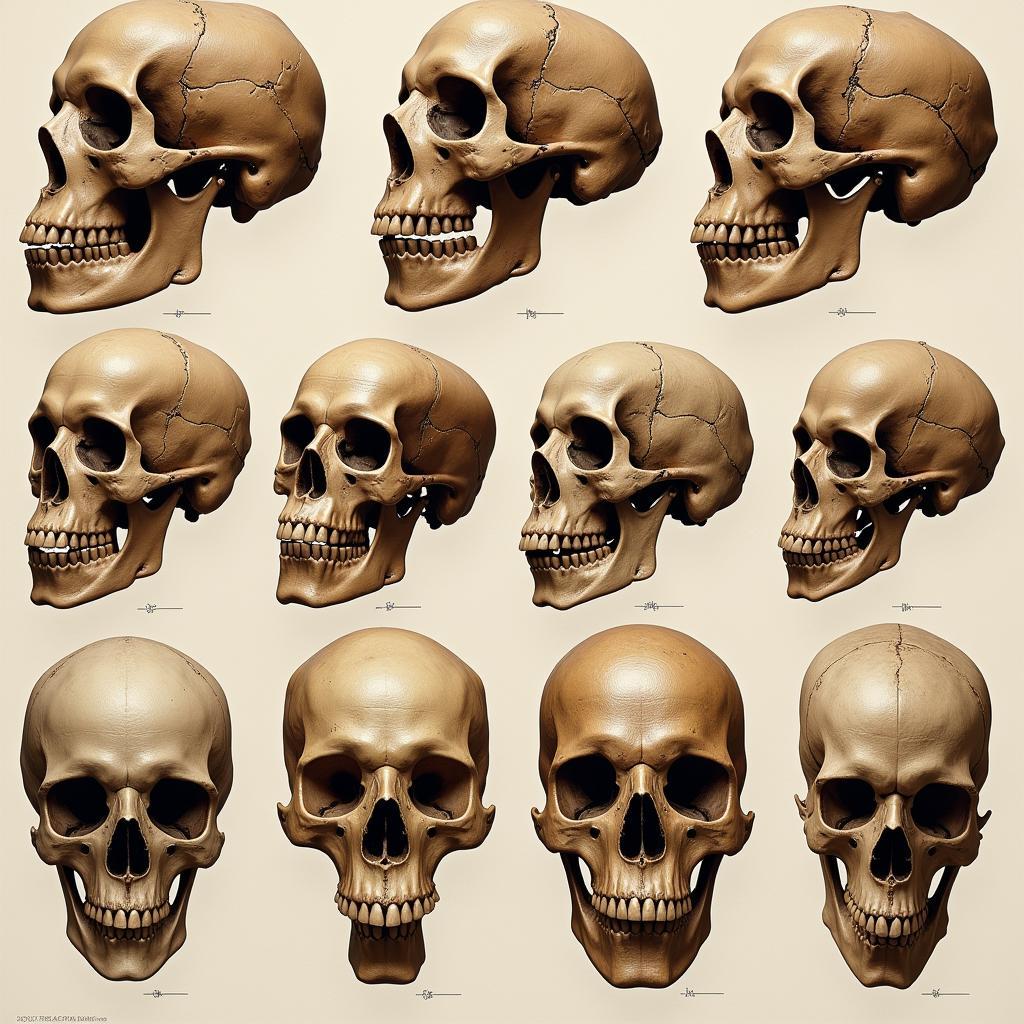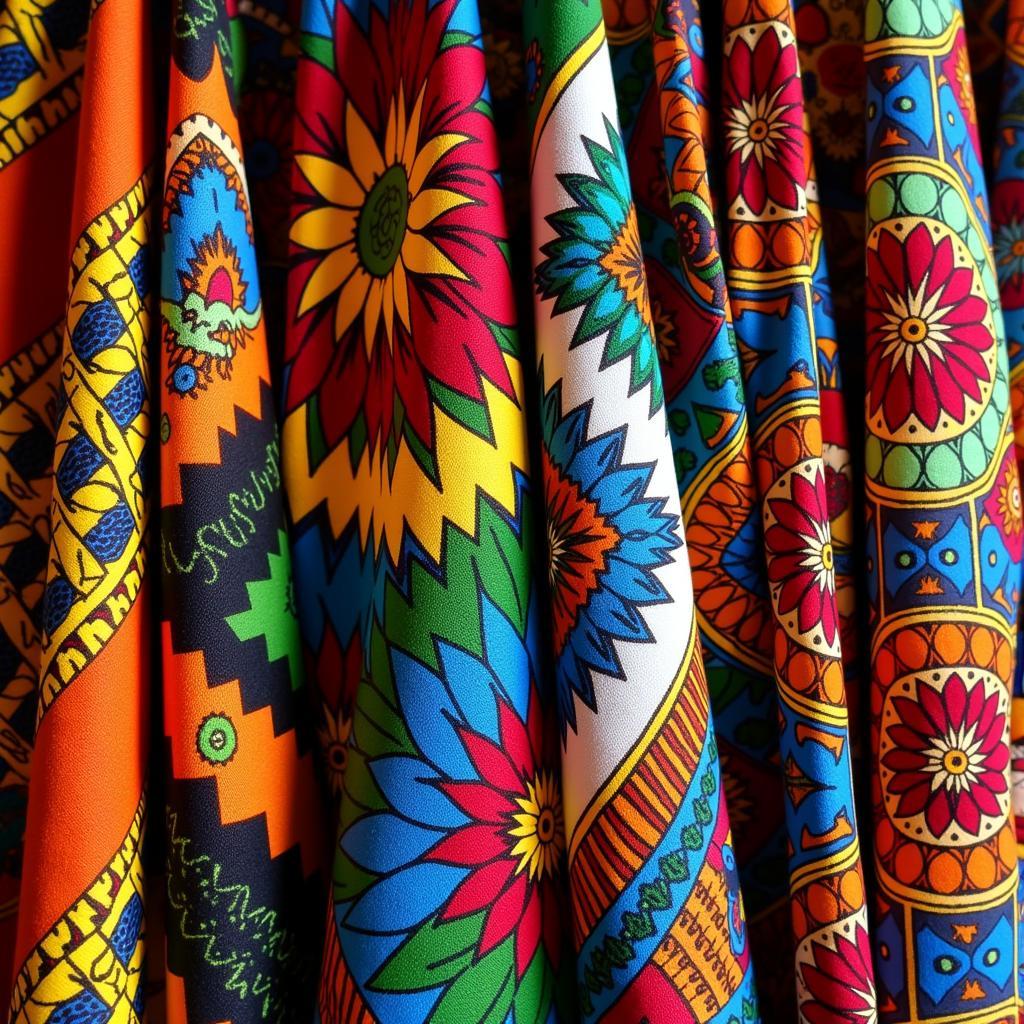African Ceremonial Dance: A Vibrant Tapestry of Culture and Tradition
African Ceremonial Dance is an integral part of the continent’s rich cultural tapestry, reflecting the diversity and vibrancy of its people. More than just movement to music, these dances embody history, spirituality, and social values, passed down through generations. From initiation rites and harvest festivals to celebrations of birth and mourning rituals, dance plays a pivotal role in marking significant life events and connecting communities.
The Language of Movement: Deciphering the Symbolism
Every gesture, costume element, and rhythmic beat in African ceremonial dance carries deep symbolic meaning. Intricate footwork might represent the connection to the earth, while expansive arm movements evoke prayers to the ancestors. Masks, often intricately carved and adorned, embody spirits or deities, transforming dancers into living representations of the divine. The vibrant costumes, incorporating feathers, shells, and animal skins, further enhance the visual narrative, reflecting social standing, clan affiliations, or the specific occasion.
A Celebration of Life’s Milestones
African ceremonial dances punctuate every stage of life, from birth to death. Initiation dances mark the transition from childhood to adulthood, testing strength, endurance, and knowledge of tribal customs. Marriage ceremonies feature joyous dances that celebrate the union of two families, while funeral rites incorporate movements that express grief, honor the deceased, and facilitate their passage into the afterlife.
 African Dancers Celebration
African Dancers Celebration
Rhythms of the Earth: Music and Dance as One
Music is inseparable from African ceremonial dance, providing the pulse and energy that drive the movements. The sounds of drums, rattles, bells, and voices blend together, creating a powerful and immersive experience. Each instrument carries its own symbolic meaning, from the deep resonance of the drums representing the heartbeat of the earth to the melodic tunes of flutes symbolizing communication with the spirits.
“The drums are not just instruments,” explains Abena Kwesi, a renowned Ghanaian dance choreographer. “They are the voices of our ancestors, guiding our steps and connecting us to the rhythm of life itself.”
A Legacy of Resilience: Preserving Tradition in a Modern World
While facing challenges from globalization and cultural homogenization, African ceremonial dance remains resilient. Communities across the continent are actively working to preserve these traditions, passing them down to younger generations through formal schools, community gatherings, and cultural festivals.
 African Dance Troupe Performance
African Dance Troupe Performance
Exploring the Diversity of African Ceremonial Dance
From the energetic Zulu war dances of South Africa to the graceful movements of the Wodaabe Gerewol courtship ritual in Niger, the diversity of African ceremonial dance is astounding. Each region and ethnic group boasts its unique styles and traditions, reflecting the continent’s rich cultural mosaic.
For those interested in experiencing the beauty and power of African art firsthand, there are many resources available, including exhibitions of African carvings and opportunities to purchase African folk art for sale.
Conclusion: African Ceremonial Dance – A Timeless Expression of Humanity
African ceremonial dance is far more than entertainment; it’s a powerful expression of cultural identity, spirituality, and communal bonding. These dances offer a window into the soul of Africa, revealing the beauty, resilience, and enduring traditions of its people. By understanding and appreciating these dances, we gain a deeper understanding of the human experience itself.
FAQ:
1. What is the significance of masks in African ceremonial dance?
Masks are often used to represent spirits, deities, or ancestors. They transform dancers into embodiments of these entities, adding a spiritual dimension to the performance.
2. Are there specific dances for different occasions?
Yes, different dances mark various life events, including births, initiations, marriages, funerals, harvests, and more.
3. How is music used in African ceremonial dance?
Music is integral, providing rhythm and energy. Drums, rattles, bells, and vocals blend to create a powerful and immersive experience.
4. Are these dance traditions still practiced today?
Yes, while facing modern influences, communities across Africa actively preserve these traditions, passing them down to younger generations.
5. Where can I learn more about African ceremonial dance?
Resources include cultural centers, museums, dance schools, and online platforms dedicated to African arts and culture.
Need Help Exploring African Culture?
For those looking to delve deeper into the fascinating world of African culture, we offer a range of resources and services. Whether you’re interested in African gameskin, African costumes, or even want to explore African art for sale in London, our team is here to assist you.
Contact us at:
Phone: +255768904061
Email: [email protected]
Address: Mbarali DC Mawindi, Kangaga, Tanzania.
Our customer service team is available 24/7 to answer your questions and provide guidance.

